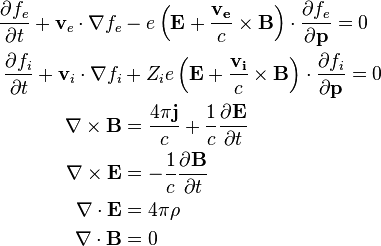RotorAndWing
Final Approach
- Joined
- Sep 5, 2008
- Messages
- 8,496
- Location
- Other side of the world
- Display Name
Display name:
Rotor&Wing
A friends car had a flat tire today. Can anyone discuss the possible cause?

 or
or  and
and  possibly
possibly 
A friends car had a flat tire today. Can anyone discuss the possible cause?

Ah, yes. That's what he's missing: Tell your friend to destroy his cell phone.Brady did it!!!!
Yea or not talking to towerFailure to file flight plan. Always the problem.4
Jim






















































Haven't you guys learned when you are being trolled?
what would you do to diagnose someone trolling?
what would you do to diagnose someone trolling?

A friends car had a flat tire today. Can anyone discuss the possible cause?
A friends car had a flat tire today. Can anyone discuss the possible cause?
A friends car had a flat tire today. Can anyone discuss the possible cause?

Ok class first we need to look at why the tire must have pressure to accomplish the task needed. Please pay attention as I only have time to go through this once:

explicitly a PDE:
and adapted it to the case of a plasma, leading to the systems of equations shown below.[5]
Instead of collision-based kinetic description for interaction of charged particles in plasma, Vlasov utilizes a self-consistent collective field created by the charged plasma particles. Such a description uses distribution functionsand for electrons and (positive) plasma ions. The distribution function
for electrons and (positive) plasma ions. The distribution function for species α describes the number of particles of the species α having approximately the momentum
for species α describes the number of particles of the species α having approximately the momentum near the position
near the position at time t. Instead of the Boltzmann equation, the following system of equations was proposed for description of charged components of plasma (electrons and positive ions):
at time t. Instead of the Boltzmann equation, the following system of equations was proposed for description of charged components of plasma (electrons and positive ions):
 Here e is the electron charge, c is the speed of light, mi is the mass of the ion,
Here e is the electron charge, c is the speed of light, mi is the mass of the ion, and
and represent collective self-consistent electromagnetic field created in the point
represent collective self-consistent electromagnetic field created in the point at time moment t by all plasma particles. The essential difference of this system of equations from equations for particles in an external electromagnetic field is that the self-consistent electromagnetic field depends in a complex way on the distribution functions of electrons and ions
at time moment t by all plasma particles. The essential difference of this system of equations from equations for particles in an external electromagnetic field is that the self-consistent electromagnetic field depends in a complex way on the distribution functions of electrons and ions and
and .
.
and Poisson's equation for self-consistent electric field:
Here qα is the particle's electric charge, mα is the particle's mass, is the self-consistent electric field,
is the self-consistent electric field, the self-consistent electric potential and ρ is the electric charge density.
the self-consistent electric potential and ρ is the electric charge density.
Vlasov–Poisson equations are used to describe various phenomena in plasma, in particular Landau damping and the distributions in a double layer plasma, where they are necessarily strongly non-Maxwellian, and therefore inaccessible to fluid models.
In fluid descriptions of plasmas (see plasma modeling and magnetohydrodynamics (MHD)) one does not consider the velocity distribution. This is achieved by replacingwith plasma moments such as number density n, flow velocity u and pressure p.[6] They are named plasma moments because the n-th moment of can be found by integrating
can be found by integrating over velocity. These variables are only functions of position and time, which means that some information is lost. In multifluid theory, the different particle species are treated as different fluids with different pressures, densities and flow velocities. The equations governing the plasma moments are called the moment or fluid equations.
over velocity. These variables are only functions of position and time, which means that some information is lost. In multifluid theory, the different particle species are treated as different fluids with different pressures, densities and flow velocities. The equations governing the plasma moments are called the moment or fluid equations.
Below the two most used moment equations are presented (in SI units). Deriving the moment equations from the Vlasov equation requires no assumptions about the distribution function.
The continuity equation describes how the density changes with time. It can be found by integration of the Vlasov equation over the entire velocity space.
After some calculations, one ends up with
The number density n, and the momentum density nu, are zeroth and first order moments:


The rate of change of momentum of a particle is given by the Lorentz equation:
By using this equation and the Vlasov Equation, the momentum equation for each fluid becomes
, where p is the pressure tensor. The material derivative is
The pressure tensor is defined as the particle mass times the covariance matrix of the velocity:

As for ideal MHD, the plasma can be considered as tied to the magnetic field lines when certain conditions are fulfilled. One often says that the magnetic field lines are frozen into the plasma. The frozen-in conditions can be derived from Vlasov equation.
We introduce the scales T, L and V for time, distance and speed respectively. They represent magnitudes of the different parameters which give large changes in. By large we mean that
We then write
Vlasov equation can now be written
So far no approximations have been done. To be able to proceed we set , where
, where is the gyro frequency and R is the gyroradius. By dividing by ωg, we get
is the gyro frequency and R is the gyroradius. By dividing by ωg, we get
If and
and , the two first terms will be much less than
, the two first terms will be much less than since
since and
and due to the definitions of T, L and V above. Since the last term is of the order of
due to the definitions of T, L and V above. Since the last term is of the order of , we can neglect the two first terms and write
, we can neglect the two first terms and write
This equation can be decomposed into a field aligned and a perpendicular part:
The next step is to write , where
, where
It will soon be clear why this is done. With this substitution, we get
If the parallel electric field is small,
This equation means that the distribution is gyrotropic.[7] The mean velocity of a gyrotropic distribution is zero. Hence, is identical with the mean velocity, u, and we have
is identical with the mean velocity, u, and we have
To summarize, the gyro period and the gyro radius must be much smaller than the typical times and lengths which give large changes in the distribution function. The gyro radius is often estimated by replacing V with the thermal velocity or the Alfvén velocity. In the latter case R is often called the inertial length. The frozen-in conditions must be evaluated for each particle species separately. Because electrons have much smaller gyro period and gyro radius than ions, the frozen-in conditions will more often be satisfied.
Ok, now it should be clear to everyone.
There will be a test tomorrow....

Maybe it was a new female tire that hadn't had a chance to develop yet. If time doesn't cure it, stuff it with paper towels, or for a more permanent fix, try silicone.A friends car had a flat tire today. Can anyone discuss the possible cause?
